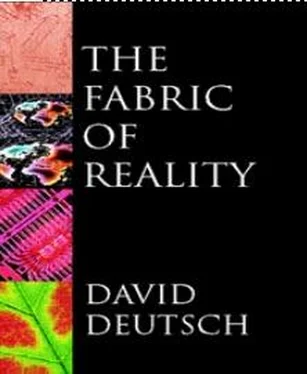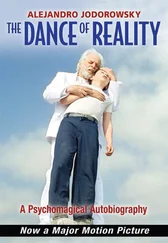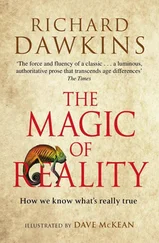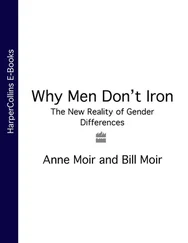David Deutch - The Fabric of Reality
Здесь есть возможность читать онлайн «David Deutch - The Fabric of Reality» весь текст электронной книги совершенно бесплатно (целиком полную версию без сокращений). В некоторых случаях можно слушать аудио, скачать через торрент в формате fb2 и присутствует краткое содержание. ISBN: , Жанр: Физика, Философия, на английском языке. Описание произведения, (предисловие) а так же отзывы посетителей доступны на портале библиотеки ЛибКат.
- Название:The Fabric of Reality
- Автор:
- Жанр:
- Год:неизвестен
- ISBN:0-7139-9061-9
- Рейтинг книги:4 / 5. Голосов: 2
-
Избранное:Добавить в избранное
- Отзывы:
-
Ваша оценка:
- 80
- 1
- 2
- 3
- 4
- 5
The Fabric of Reality: краткое содержание, описание и аннотация
Предлагаем к чтению аннотацию, описание, краткое содержание или предисловие (зависит от того, что написал сам автор книги «The Fabric of Reality»). Если вы не нашли необходимую информацию о книге — напишите в комментариях, мы постараемся отыскать её.
The Fabric of Reality — читать онлайн бесплатно полную книгу (весь текст) целиком
Ниже представлен текст книги, разбитый по страницам. Система сохранения места последней прочитанной страницы, позволяет с удобством читать онлайн бесплатно книгу «The Fabric of Reality», без необходимости каждый раз заново искать на чём Вы остановились. Поставьте закладку, и сможете в любой момент перейти на страницу, на которой закончили чтение.
Интервал:
Закладка:
The conversion, relative to any observer, of possibilities into actualities — of an open future into a fixed past — also makes sense in this framework. Consider the coin-tossing example again. Before the coin toss, the future is open from the point of view of an observer, in the sense that it is still possible that either outcome, ‘heads’ or ‘tails’, will be observed by that observer. From that observer’s point of view both outcomes are possibilities, even though objectively they are both actualities. After the coin has settled, the copies of the observer have differentiated into two groups. Each observer has observed, and remembers, only one outcome of the coin toss. Thus the outcome, once it is in the past of any observer, has become single-valued and actual for every copy of the observer, even though from the multiverse point of view it is just as two-valued as ever.
Let me sum up the elements of the quantum concept of time. Time is not a sequence of moments, nor does it flow. Yet our intuitions about the properties of time are broadly true. Certain events are indeed causes and effects of one another. Relative to an observer, the future is indeed open and the past fixed, and possibilities do indeed become actualities. The reason why our traditional theories of time are nonsense is that they try to express these true intuitions within the framework of a false classical physics. In quantum physics they make sense, because time was a quantum concept all along. We exist in multiple versions, in universes called ‘moments’. Each version of us is not directly aware of the others, but has evidence of their existence because physical laws link the contents of different universes. It is tempting to suppose that the moment of which we are aware is the only real one, or is at least a little more real than the others. But that is just solipsism. All moments are physically real. The whole of the multiverse is physically real. Nothing else is.
flow of timeThe supposed motion of the present moment in the future direction, or the supposed motion of our consciousness from one moment to another. (This is nonsense!)
spacetimeSpace and time, considered together as a static four-dimensional entity.
spacetime physicsTheories, such as relativity, in which reality is considered to be a spacetime. Because reality is a multiverse, such theories can at best be approximations.
free willThe capacity to affect future events in any one of several possible ways, and to choose which shall occur.
counter-factual conditionalA conditional statement whose premise is false (such as ‘Faraday had died in 1830, then X would have happened’).
snapshot(terminology for this chapter only) A universe at a particular time.
Time does not flow. Other times are just special cases of other universes.
Time travel may or may not be feasible. But we already have reasonably good theoretical understanding of what it would be like if it were, an understanding that involves all four strands.
12
Time Travel
It is a natural thought, given the idea that time is in some ways like an additional, fourth dimension of space, that if it is possible to travel from one place to another, perhaps it is also possible to travel from one time to another. We saw in the previous chapter that the idea of ‘moving’ through time, in the sense in which we move through space, does not make sense. Nevertheless, it seems clear what one would mean by travelling to the twenty-fifth century or to the age of the dinosaurs. In science fiction, time machines are usually envisaged as exotic vehicles. One sets the controls to the date and time of one’s chosen destination, waits while the vehicle travels to that date and time (sometimes one can choose the place as well), and there one is. If one has chosen the distant future, one converses with conscious robots and marvels at interstellar spacecraft, or (depending on the political persuasion of the author) one wanders among charred, radioactive ruins. If one has chosen the distant past, one fights off an attack by a Tyrannosaurus rex while pterodactyls flutter overhead.
The presence of dinosaurs would be impressive evidence that we really had reached an earlier era. We should be able to cross-check this evidence, and determine the date more precisely, by observing some natural long-term ‘calendar’ such as the shapes of the constellations in the night sky or the relative proportions of various radioactive elements in rocks. Physics provides many such calendars, and the laws of physics cause them to agree with one another when suitably calibrated. According to the approximation that the multiverse consists of a set of parallel spacetimes, each consisting of a stack of ‘snapshots’ of space, the date defined in this way is a property of an entire snapshot, and any two snapshots are separated by a time interval which is the difference between their dates. Time travel is any process that causes a disparity between, on the one hand, this interval between two snapshots, and on the other, our own experience of how much time has elapsed between our being in those two snapshots. We might refer to a clock that we carry with us, or we might estimate how much thinking we have had the opportunity to do, or we might measure by physiological criteria how much our bodies have aged. If we observe that a long time has passed externally, while by all subjective measures we have experienced a much shorter time, then we have travelled into the future. If, on the other hand, we observe the external clocks and calendars indicating a particular time, and later (subjectively) we observe them consistently indicating an earlier time, then we have travelled into the past.
Most authors of science fiction realize that future- and past-directed time travel are radically different sorts of process. I shall not give future-directed time travel much attention here, because it is by far the less problematic proposition. Even in everyday life, for example when we sleep and wake up, our subjectively experienced time can be shorter than the external elapsed time. People who recover from comas lasting several years could be said to have travelled that many years into the future, were it not for the fact that their bodies have aged according to external time rather than the time they experienced subjectively. So, in principle, a technique similar to that which we envisaged in Chapter 5for slowing down a virtual-reality user’s brain could be applied to the whole body, and thus could be used for fully fledged future-directed time travel. A less intrusive method is provided by Einstein’s special theory of relativity, which says that in general an observer who accelerates or decelerates experiences less time than an observer who is at rest or in uniform motion. For example, an astronaut who went on a round-trip involving acceleration to speeds close to that of light would experience much less time than an observer who remained on Earth. This effect is known as time dilation. By accelerating enough, one can make the duration of the flight from the astronaut’s point of view as short as one likes, and the duration as measured on Earth as long as one likes. Thus one could travel as far into the future as one likes in a given, subjectively short time. But such a trip to the future is irreversible. The return journey would require past-directed time travel, and no amount of time dilation can allow a spaceship to return from a flight before it took off.
Virtual reality and time travel have this, at least, in common: they both systematically alter the usual relationship between external reality and the user’s experience of it. So one might ask this question: if a universal virtual-reality generator could so easily be programmed to effect future-directed time travel, is there a way of using it for past-directed time travel? For instance, if slowing us down would send us into the future, would speeding us up send us into the past? No; the outside world would merely seem to slow down. Even at the unattainable limit where the brain operated infinitely fast, the outside world would appear frozen at a particular moment. That would still be time travel, by the above definition, but it would not be past-directed. One might call it ‘present-directed’ time travel. I remember wishing for a machine capable of present-directed time travel when doing last-minute revision for exams — what student has not?
Читать дальшеИнтервал:
Закладка:
Похожие книги на «The Fabric of Reality»
Представляем Вашему вниманию похожие книги на «The Fabric of Reality» списком для выбора. Мы отобрали схожую по названию и смыслу литературу в надежде предоставить читателям больше вариантов отыскать новые, интересные, ещё непрочитанные произведения.
Обсуждение, отзывы о книге «The Fabric of Reality» и просто собственные мнения читателей. Оставьте ваши комментарии, напишите, что Вы думаете о произведении, его смысле или главных героях. Укажите что конкретно понравилось, а что нет, и почему Вы так считаете.












